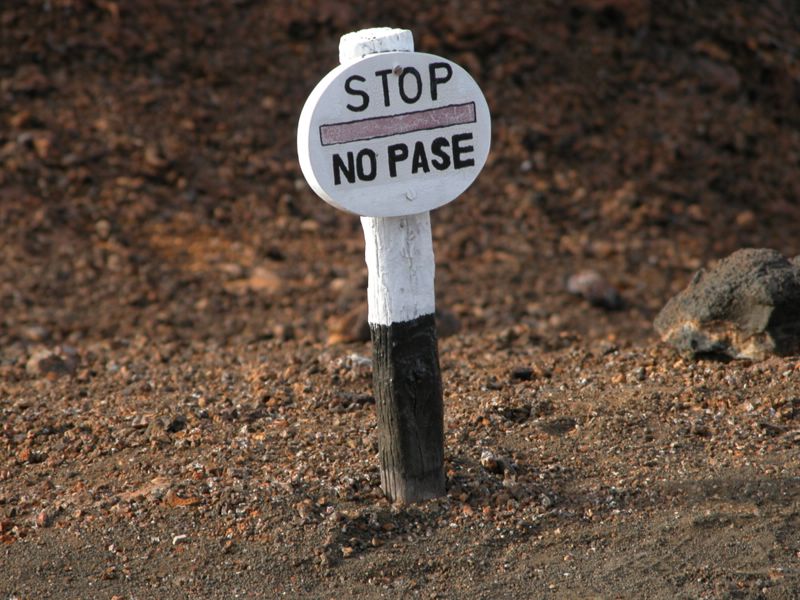


| September
25, 2004; Charles Darwin Foundation website (link) Jessica Oil Spill; (dawn) Tuesday January 23, 2001. Grounding of fuel tanker on coast of San Cristobal; a quarter of a million gallons of diesel and bunker fuel in the sea. A few seabirds and sea lions affected. Found a contact!; Galapagos National Park Isabela Island, Puerto Villamil Phone/fax (593-5) 2529178 e-mail; pngisa@ecua.net.ec October 1, 2004 [Following material mainly from the book; Galapagos; A Natural History by Michael H. Jackson]  Ecosystems of the world are more fragile the more isolated they are, that of the Galapagos Islands is one of such. The islands are at risk both because of past ravages and also because of modern economic and social pressures. 1959; Ecuadorean government declares all islands, except areas already colonized, a National Park. 1986; Ecuadorean president declares entire waters of archipelago, as well as a surrounding zone 15 nautical miles wide, the Galapagos Marine Resources Reserve. In 1998, this is extended to 40 nautical miles wide, the largest in the world of it's kind. More than 40,000 visitors to islands each year. Problem of islands can be grouped into three areas;
Introduced Spp. and their control; Once settlers came, they brought with them a full range of domestic animals and plants some of which went wild and started feral populations. Some of such animals introduced by previous colonists, visitors and fishermen include;
Two of the main islands, Fernandina and Genovesa are relatively free from introduced organisms. Attempts at controlling these spp. include....(for later!) Restoration of native populations; Large numbers of animals have been killed in the past by human beings who have also cleared great areas of native vegetation for agriculture and ranching purposes. At one time, animals were killed either for food or for pleasure. Among such were tortoises, iguanas, fur seals, doves and other birds. Fur seals were exploited almost to a point of extinction by North American hunters in the 1800s. Animal spp. such as tortoises and iguanas could be termed endangered. The only bird spp. considered endangered is the dark-rumped (Hawaiian) petrel due to predation. Small bird populations are considered fragile such as the flightless commorants, penguins and flamingos. 12 spp. of galapagos plants are considered in danger of extinction (Valdebenito 1992). Attempts at restoring the native population include...(for later!) Management of Human impact; Over 40,000 tourists visit the Islands each year. the resident human population doubled during the 80s and was about 10,000 in 1990. The current population is estimated at 20,000 permanent residents. All of these have led to an increase of problems such as those of sewage, resource overuse, crime and other social problems. As the population grows, so does the demand for scarce resources. Residents on the islands need water, imported food, building materials and other items. Many beaches around the islands are also no longer clean. Environmental education is currently going on on the islands for local residents and their children. Tourist guides and park wardens are trained in park management and natural history, meanwhile Ecuadorean students are trained in conservation and scientific methods with the hope that they will later on work in Galapagos conservation. Effects of artisanal fishing; Fishing: Effects of Artisanal Fishing (Ruttenberg Benjamin, Conservation Biology Volume 15, Issue 6, Dec. 2001) About three small fishing ports exist in the Galapagos Islands. Local artisanal fishers (small scale fishing using simple technology such as hand lines and hand nets) have been found to represent a threat to the marine environment. A large number of these fishermen are immigrants who came to the Islands to earn a living. Often, they become indebted to (and are controlled by) unscrupulous traders. Fishing sites along Southern shore of Santa Cruz near the port (where the Charles Darwin research station is located) are the most heavily fished areas in the central zone, because they are the most accessible to fishers. Lightly fished sites are further away, situated in the north of the central zone. Researcher- Benjamin Ruttenberg's studies on the marine communities of the Islands (1998) yielded results which enabled him conclude that even though the Galapagos islands harbor some of the least impacted marine ecosystems in the tropics, local artisanal fishing is affecting exploited marine communities negatively. The direct effects of artisanal fishing are limited to the primary target species which probably results from the high specificity of fishing gear. Differences in community structure observed however suggested that artisanal fishing also has cascading effects on non-commercial species throughout the community. A decade ago, the Bacalao (Mycteroperca olfax), a large grouper, was the most valuable and exploited fish in the artisanal fishery (Kasteleijin 1987), comprising over 40% of the catch (Reck 1983). Now, M. olfax may comprise less than 20% of the catch, and fishers themselves indicate that the catch per unit effort and average size of fish have declined (Bustamante, 1998). Artisanal fishers in the Galapagos employ various fishing methods but only two were found out to affect the rock reef habitats sampled by Ruttenberg.
The strongest effects of fishing Ruttenberg detected were direct effects on target species. The selectivity of hnd lines for higher predators- and selectivity of spearguns for only the largest fish, to the extent that they are used- may help limit the direct efects to the primary target species. Changes in the abundance of M. olfax and two abundant non-commercial species and trends in a number of other non-commercial species, herbivorous fishes, and sea urchins may be the first indications of shifts in the community structure resulting from a relatively brief history of exploitation. It may be encouraging that the most obvious effects of artisanal fishing in Galapagos are limited to the primary commercial species but it remains unclear how serious this effect is and what cascading effects it may have in the present or future. |